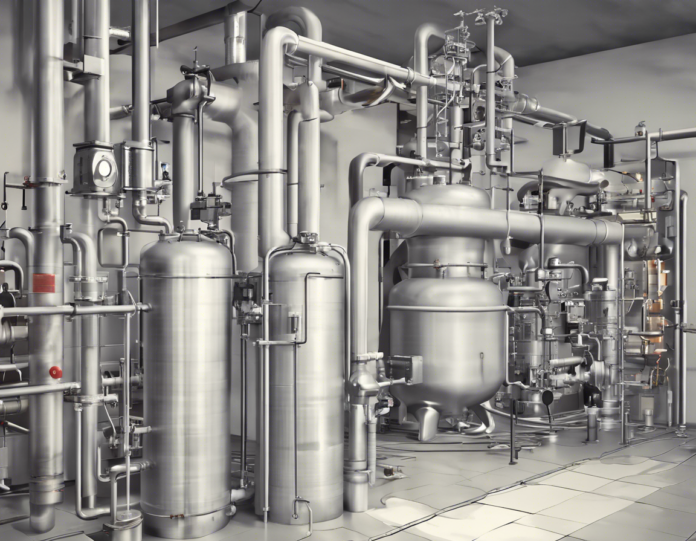Gas pressure is a fundamental concept in the field of physics and chemistry that plays a crucial role in various natural phenomena and everyday applications. In this comprehensive guide, we will delve deep into the understanding of gas pressure, exploring its definition, factors affecting it, measurement techniques, real-life examples, and much more.
What is Gas Pressure?
Gas pressure refers to the force exerted by gas molecules on the walls of their container due to their random motion. It is the result of the numerous collisions between gas particles and the walls of the container. The SI unit of pressure is the pascal (Pa), but it is often expressed in atmospheres (atm), millimeters of mercury (mmHg), or pounds per square inch (psi) depending on the context.
Factors Affecting Gas Pressure
Several factors influence gas pressure, including:
1. Temperature
- As the temperature of a gas increases, its particles gain more kinetic energy, leading to higher velocities and more frequent collisions with the container walls. This results in an increase in gas pressure.
2. Volume
- When the volume of a gas decreases, the same number of gas molecules is confined to a smaller space, leading to more collisions with the container walls and a subsequent increase in pressure.
3. Number of Gas Molecules
- Increasing the number of gas molecules in a container without changing the volume results in more collisions and, therefore, higher gas pressure.
Calculating Gas Pressure
The pressure of a gas can be calculated using the ideal gas law equation:
[PV = nRT]
Where:
- ( P ) = Pressure
- ( V ) = Volume
- ( n ) = Number of moles of gas
- ( R ) = Ideal gas constant
- ( T ) = Temperature in Kelvin
Units of Gas Pressure
Gas pressure can be measured in various units, such as:
- Pascal (Pa)
- Atmosphere (atm)
- Millimeters of Mercury (mmHg)
- Pounds per Square Inch (psi)
Real-Life Examples of Gas Pressure
1. Tire Pressure
- Tire pressure is a critical aspect of vehicle maintenance. Proper tire pressure ensures optimal fuel efficiency, traction, and overall performance. The recommended pressure for a particular vehicle is often indicated in the owner's manual or on a sticker inside the driver's door.
2. Scuba Diving
- In scuba diving, understanding gas pressure is crucial for maintaining the balance of gases in the diver's body at varying depths. The pressure exerted by the surrounding water increases with depth, affecting the diver's air supply and decompression needs.
Measuring Gas Pressure
Gas pressure can be measured using various instruments, including:
1. Barometer
- A barometer is used to measure atmospheric pressure. Types of barometers include mercury barometers, aneroid barometers, and electronic barometers.
2. Manometer
- A manometer is specifically designed to measure the pressure of gases in a closed system. Common types of manometers include U-tube manometers and well-type manometers.
Gas Pressure and the Atmosphere
The Earth's atmosphere exerts a gas pressure known as atmospheric pressure. This pressure decreases with increasing altitude due to the decreasing amount of air above. Atmospheric pressure plays a crucial role in weather patterns, air circulation, and the sustainability of life on Earth.
Frequently Asked Questions (FAQs)
1. What is the difference between gas pressure and atmospheric pressure?
- Gas pressure refers to the force exerted by gas molecules within a confined space, while atmospheric pressure is the pressure exerted by the Earth's atmosphere at a given point.
2. How does temperature affect gas pressure?
- An increase in temperature leads to an increase in the kinetic energy of gas molecules, resulting in higher velocities and more collisions with the container walls, thereby increasing gas pressure.
3. What is the ideal gas law equation used for?
- The ideal gas law equation, PV = nRT, is used to relate the pressure, volume, temperature, and amount of gas in a system. It is instrumental in understanding the behavior of gases under different conditions.
4. Why is tire pressure important for vehicles?
- Maintaining proper tire pressure ensures optimal fuel efficiency, handling, and safety of the vehicle. Incorrect tire pressure can lead to decreased fuel efficiency, uneven tire wear, and compromised handling.
5. How does gas pressure impact weather patterns?
- Atmospheric pressure plays a vital role in the formation of weather patterns. Variations in pressure lead to the movement of air masses, resulting in the creation of high and low-pressure systems that influence wind patterns and precipitation.
In conclusion, gas pressure is a fundamental concept with significant implications in various fields, from physics and chemistry to meteorology and everyday applications. Understanding the principles of gas pressure allows for a deeper insight into the behavior of gases and their role in natural phenomena and technological advancements.


Recent comments